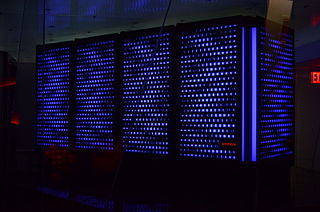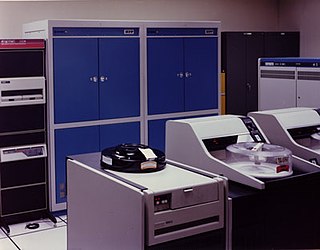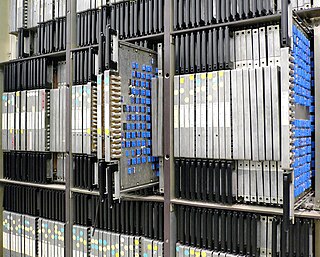 W
WAnton is a massively parallel supercomputer designed and built by D. E. Shaw Research in New York, first running in 2008. It is a special-purpose system for molecular dynamics (MD) simulations of proteins and other biological macromolecules. An Anton machine consists of a substantial number of application-specific integrated circuits (ASICs), interconnected by a specialized high-speed, three-dimensional torus network.
 W
WA Connection Machine (CM) is a member of a series of massively parallel supercomputers that grew out of doctoral research on alternatives to the traditional von Neumann architecture of computers by Danny Hillis at Massachusetts Institute of Technology (MIT) in the early 1980s. Starting with CM-1, the machines were intended originally for applications in artificial intelligence (AI) and symbolic processing, but later versions found greater success in the field of computational science.
 W
WThe Finite Element Machine (FEM) was a late 1970s-early 1980s NASA project to build and evaluate the performance of a parallel computer for structural analysis. The FEM was completed and successfully tested at the NASA Langley Research Center in Hampton, Virginia. The motivation for FEM arose from the merger of two concepts: the finite element method of structural analysis and the introduction of relatively low-cost microprocessors.
 W
WThe Goodyear Massively Parallel Processor (MPP) was a massively parallel processing supercomputer built by Goodyear Aerospace for the NASA Goddard Space Flight Center. It was designed to deliver enormous computational power at lower cost than other existing supercomputer architectures, by using thousands of simple processing elements, rather than one or a few highly complex CPUs. Development of the MPP began circa 1979; it was delivered in May 1983, and was in general use from 1985 until 1991.
 W
WThe ILLIAC IV was the first massively parallel computer. The system was originally designed to have 256 64-bit floating point units (FPUs) and four central processing units (CPUs) able to process 1 billion operations per second. Due to budget constraints, only a single "quadrant" with 64 FPUs and a single CPU was built. Since the FPUs all had to process the same instruction – ADD, SUB etc. – in modern terminology the design would be considered to be single instruction, multiple data, or SIMD.
 W
WThe Intel Personal SuperComputer was a product line of parallel computers in the 1980s and 1990s. The iPSC/1 was superseded by the Intel iPSC/2, and then the Intel iPSC/860.
 W
WThe Intel Paragon is a discontinued series of massively parallel supercomputers that was produced by Intel in the 1990s. The Paragon XP/S is a productized version of the experimental Touchstone Delta system that was built at Caltech, launched in 1992. The Paragon superseded Intel's earlier iPSC/860 system, to which it is closely related.
 W
WMasPar Computer Corporation was a minisupercomputer vendor that was founded in 1987 by Jeff Kalb. The company was based in Sunnyvale, California.
 W
WMeiko Scientific Ltd. was a British supercomputer company based in Bristol, founded by members of the design team working on the INMOS transputer microprocessor.